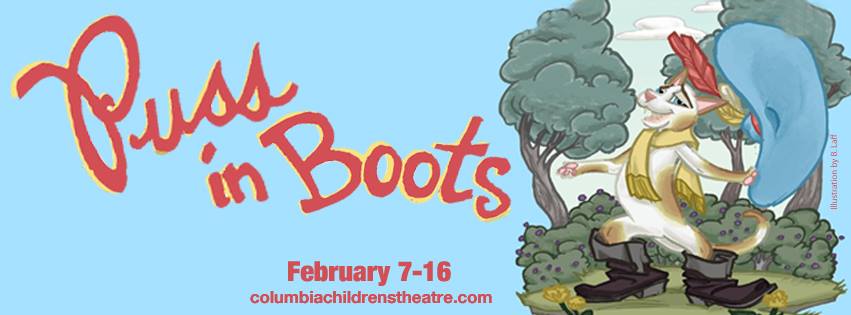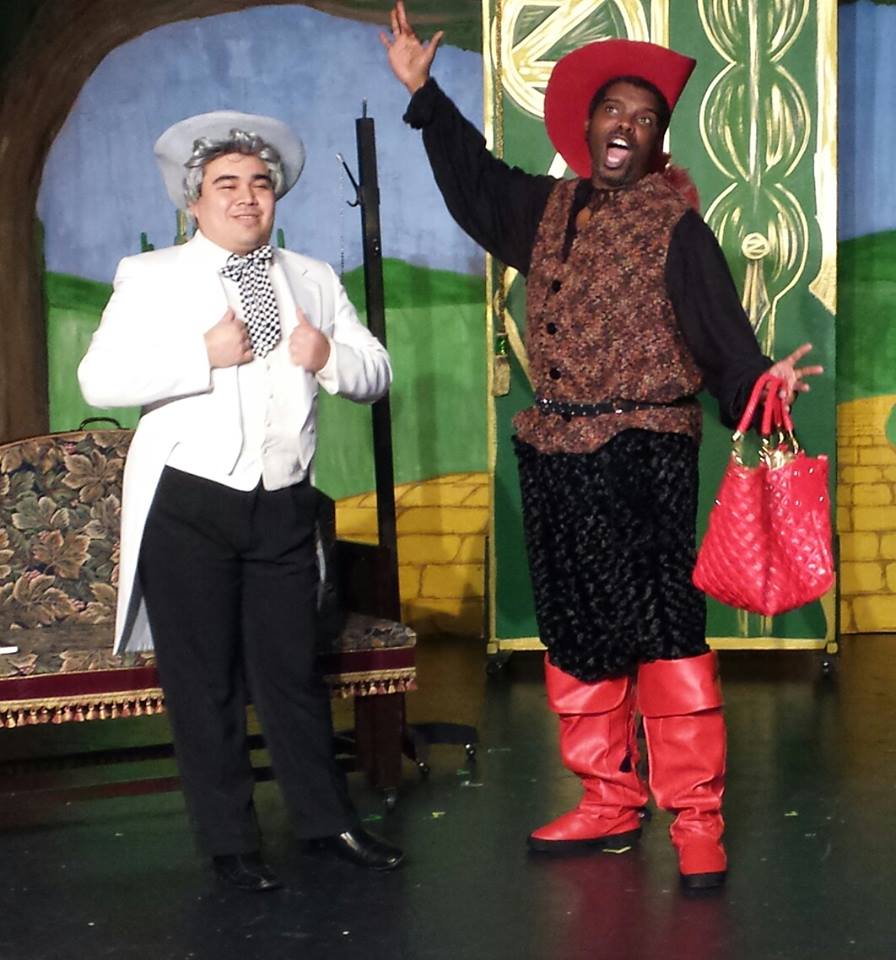In these scary but often enlightening times, Jasper continues to interview artists, sharing their creations and ideas, new and old, with the community. I recently talked with local artist, performer, and all around wonderful human being, Darion McCloud, about his new project The Magic Purple Circle, in which he reads children’s stories to families at home during quarantine.
Jasper: You’ve been creating art and performing for so long now. How has that changed or transformed recently with COVID and other social/political events.
McCloud: We are in a real, full-blown pandemic with people in leadership positions not knowing what to do, and now it's out of control. I never imagined the economic, the physical, the spiritual/cultural, the mental havoc it could wreak, and it's pushed me to The Magic Purple Circle. This is my response to the world being on fire. And fire can hurt, but it also can burn away impurities and forge things. I'm thinking after this, hopefully, we learn our lesson until we finally think, "You know, healthcare is pretty important for everybody. Police brutality, police just rolling up on people and killing them is wrong." These are things that we can fix. These are things that we're going to have to fix. That's one thing the uprisings and the pandemic have shown us. All these things that we have, these privileges that we think we have, even the ones we don't have but we think we have, they're not a birthright. We think it's a birthright to go wherever we want to go, and do whatever we want to do, and have whatever we want to have. No, those are the things that people have worked for, and sacrificed, or some people have stolen, but you don't just get them because you're an American. And, so, part of what The Magic Purple Circle is supposed to do is to bring a little bit of joy into while the world is burning. And hopefully we're burning off impurities, and we're leaving behind things we don't need. You can still smile and laugh and be silly. This is going to sound grandiose, but I really do believe this: sometimes just laughing, just loving, is revolutionary.
Jasper: Of all things to create as a response in these times, why a children’s series?
McCloud: Actually, my first time performing, period, was for children as a storyteller. In 1993, I started working with what was then Richland County Public Library. I’m lucky that today a large part of my practice is still with families and with kids. This past March, it was Dr. Seuss's birthday, so I was entered into a lot of Dr. Seuss gigs, and I just thought about all those kids who were at home, not reading Green Eggs and Ham, which is one of my favorite books ever. I would see all these posts online about people complaining about being stuck home with their kids, and I saw my own daughter struggling. She was quiet, but that was the scary part. I knew she had to be struggling. So, this was my little contribution to all that, and people just dug it. People dug it, dug me, and kept hitting me up, and I started making more. Before I knew it, people were hitting me up like, ‘Hey, my kid's mad at you because you haven't made a Magic Purple Circle in a week.’
Jasper: The title – Magic Purple Circle – is so fun. How did you come up with it?
McCloud: I'm from Columbia, and when I first started working with the library, the story time room was on the other side of the building, and inside the story time room, there was a big, plushy purple carpet, and then inside that carpet was a deeper purple circle that I called the story time circle. I used to have a little speech I gave to the attendees, to the people coming to the story time. I'd tell all the parents that if you sat inside the magic purple circle, you had to do everything we did. That included singing songs, the Hokey Pokey, whatever. It was kind of a release, an excuse, like, "Well, I have to do the Hokey Pokey, because I'm inside the purple circle," without them admitting, "I love the Hokey Pokey!" Because of that I always called it the magic purple circle, so when I was trying to think of name for this project, it just brought me full circle to where I first started: sharing stories with families.
Jasper: And how do you choose what stories to share?
McCloud: A lot of it for me is nostalgia. A lot of the books are old. They're books from 20 years ago that I thought were special. Or maybe it’s just something I think is cool, something I think is interesting. Sometimes it’s something I think it is more suited for other people, something I think reflects people. Even today, children of color are underrepresented in children's literature. I don’t know – it's not a real scientific process. It's just what moves me. What moves me, what I think will move someone. It's kind of cool, people often say, "Oh man, this made my day," or sometimes, every blue moon, somebody's like, "I cried". It's just cool. And, I mean, I love picture books. I don't think you outgrow a great picture book. Everything that you're looking for in the arts, period, is there. Great storytelling, great words, economy of language.
Jasper: Would you say the whole process of the show is organic like that?
McCloud: Yeah, it's unscripted. I'm real comfortable in that environment. One of the things I did was I ran an improv group for a while. I just say what's real for me. That doesn't mean I don't make mistakes. If it's a minor mistake, I just keep it. Like if I mispronounced a word or something. And I kind of like that, too, because I like the kids knowing. It's not so sterile as a lot of times on television, there's never a flub. So unknowingly, you make this impression that a flaw is a mistake. I just know I'll make a flub and come back and say, "Oh, I mispronounced that word." I think it's easy because I speak my truth, and it's easy because I'm doing what I love, and I hope what I love, what I'm doing, is good for people. I love it. I love what I'm doing. I love the books. I love doing that, I love having fun with the families. So, like I say, I just kind of speak the truth of the moment.
Jasper: Do you plan to do The Magic Purple Circle for as long as you can?
McCloud: Yeah. I didn't envision it getting where it is, and it's made me think. One of the things I've always wanted to do is I want a TV show. I'm hoping The Magic Purple Circle can evolve into a family TV show. I grew up on Electric Company, Sesame Street, Mr. Rogers, Zoom. My childhood is the '60s, '70s. So, I want to do something like that.
Jasper: And you said Magic Purple Circle moves around, right?
McCloud: Yeah, I did one for Colleton County right at the beginning of the summer and with the Columbia Museum of Art a couple weeks ago. One just aired with Richland Library, and I still want to do smaller ones for families.
Jasper: What's the best way people can support you and the project?
McCloud: Find Magic Purple Circle on YouTube. I mean I'm just like every other artist during COVID-19. This is what I do. This is my gig. Money is always appreciated. 99% of the people you see on stage, they're out of work now. That's how it is for most artists. We're making work, but even that is limited. People sharing the work, that helps a lot because hopefully the more people see it and the more people can talk to me about it, the better I can make it. People may know networks or venues I could use. But the most important thing for me is sharing. If you don't have any money, if you don't have any influence...that's not what I'm doing this for. I'm doing this just for people, hopefully to make people's day a little bit better. Make people laugh a little bit, make people hug their kids a little tighter.
Jasper: Have you had help from people putting the show on and sharing it?
McCloud: I'm kind of a one-man gang, one-man operation. Michaela [Pilar Brown] has done some great work; she designed my logo for this. I’ve co-created with Molly Ledford, Heather Leigh, Bonita Peeples, and Drew Baron. Sam McWhite has done this incredible music. When I can expand it, I have people, but for the most part, it's just kind of me.
Jasper: And, as a storyteller, do you have people or figures that have inspired you?
McCloud: There are too many to name but Prince, African American painter Jacob Lawrence, comic book creator Jack “King” Kirby, and the Pittsburgh Steelers to name a few.
Jasper: How about other adventures? Are you working on any other projects right now?
McCloud: It's not defined yet, but I’m trying to work on some adult stuff, too, because working for families is good, but there's more. I'm lucky enough to have those two halves. To love the family work and have that, but also, I love to do very…I call it the backbreaking stuff. So, like when the uprisings happened, the conversations now, these are conversations I've been having with my art since I became an adult, when I was still a visual artist. As a theater artist, this is the type of work I love. Like I said, I call it the backbreaking planes, where it forces you to look in the mirror, even if it's not ‘you’ that you see. Maybe it's your friend or maybe it's your family or maybe it is you, but it forces you to look. Or maybe the you, the we, is sometimes larger. Race, gender, class, nationalism, whatever. I love that type of work in my adult work, so I'm working on some stuff to address that.
Jasper: Well, as you and others continue to work on these projects, do you have any advice you’d give to creators who want to respond to this world on fire but don’t know how?
McCloud: I can't really give advice but trust yourself. It's different for everybody. Somebody might take two years to process all this, or it ekes out into your work little by little, or you do one big thing. I think that's one of the traps of this thing has been everybody feels like, "Well, I'm stuck at home. I have to create. I should be creating. I have all this time." And you put this weird pressure on yourself. Hell, I'm still processing. I'm working, making things, but I'm not done processing. For one thing, this thing, it shifts so often. I would just say trust yourself, man. Don't try to beat yourself up too much. Just trust yourself.
You can find The Magic Purple Circle at YouTube here and check out McCloud’s recent collaboration with the Richland Library here.
Be sure to follow Jasper on social media (The Jasper Project on Facebook; @the_jasper_project on Instagram; @JASPERadvises on Twitter) to keep up with local art events like The Magic Purple Circle.












 Theatre review by Melissa Swick Ellington
Theatre review by Melissa Swick Ellington










